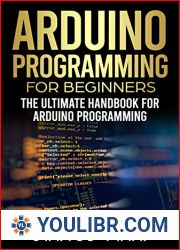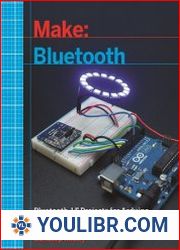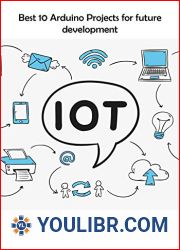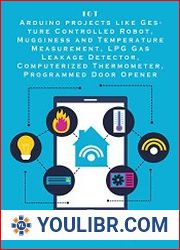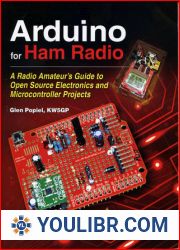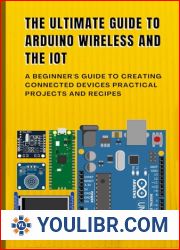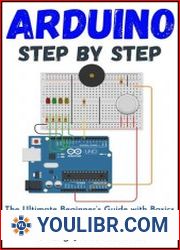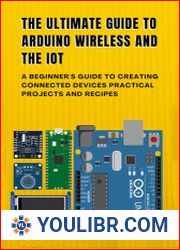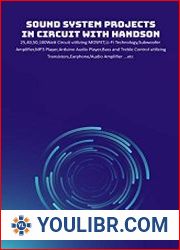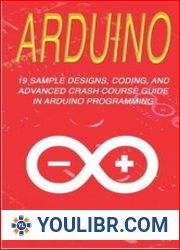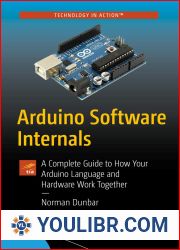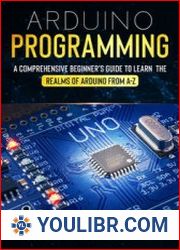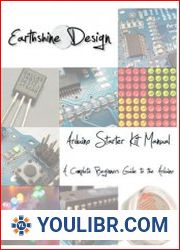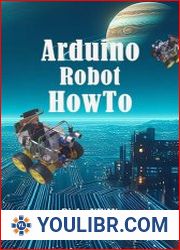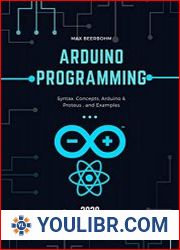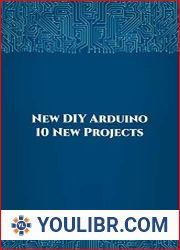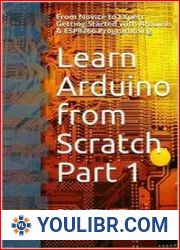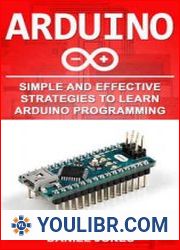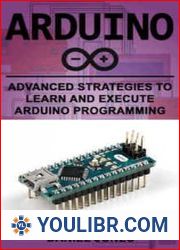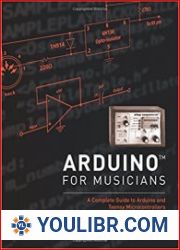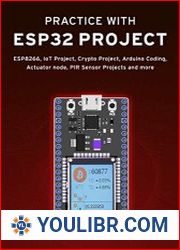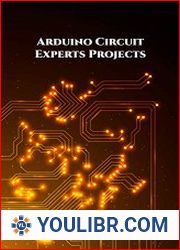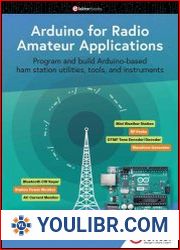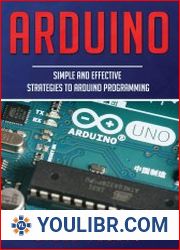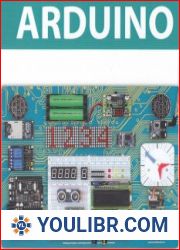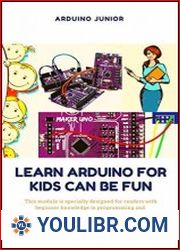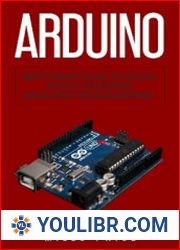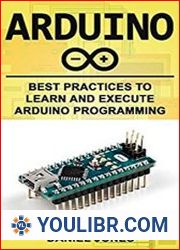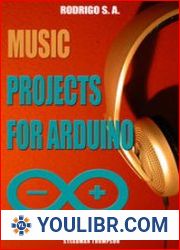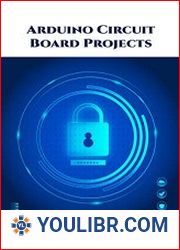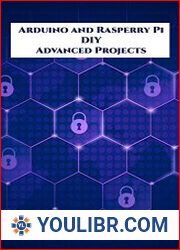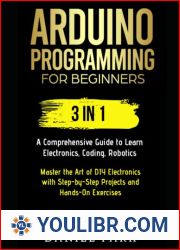
BOOKS - EQUIPMENT - Arduino Oscilloscope Projects

Arduino Oscilloscope Projects
Author: Robert J Davis II
Year: 2015
Format: PDF | EPUB
File size: 10.2 MB
Language: ENG

Year: 2015
Format: PDF | EPUB
File size: 10.2 MB
Language: ENG

The book begins by introducing the basic principles of oscilloscopes and how they are used in electronics testing and measurement. It then goes on to describe the hardware and software components of an oscilloscope, including the analog to digital converter, triggering system, display, and input channels. The author also discusses the different types of oscilloscopes available in the market and their features. The second part of the book provides detailed instructions on how to build your own Arduino-based oscilloscope using readily available components such as the CA306 analog to digital converter and LCD displays. The author walks you through each step of the process, from assembling the circuit board to writing the software code for the microcontroller. He also provides tips and tricks for optimizing the performance of your oscilloscope. The third part of the book focuses on the practical applications of oscilloscopes in various fields such as robotics, automotive systems, and medical devices. The author provides examples of how oscilloscopes can be used to diagnose and troubleshoot problems in these areas, as well as how they can be used to measure and analyze signals in real-time. Finally, the book concludes with a discussion on the future of oscilloscopes and how they will continue to evolve with advancements in technology.
Книга начинается с введения основных принципов осциллографов и того, как они используются при тестировании и измерении электроники. Далее описываются аппаратные и программные компоненты осциллографа, включая аналого-цифровой преобразователь, систему запуска, дисплей и входные каналы. Автор также обсуждает различные типы осциллографов, доступных на рынке, и их особенности. Вторая часть книги содержит подробные инструкции по созданию собственного осциллографа на базе Arduino с использованием легкодоступных компонентов, таких как аналого-цифровой преобразователь CA306 и ЖК-дисплеи. Автор проводит вас через каждый шаг процесса, от сборки печатной платы до написания программного кода для микроконтроллера. Он также дает советы и рекомендации по оптимизации работы осциллографа. Третья часть книги посвящена практическому применению осциллографов в различных областях, таких как робототехника, автомобильные системы и медицинские приборы. Автор приводит примеры того, как осциллографы можно использовать для диагностики и устранения неполадок в этих областях, а также как их можно использовать для измерения и анализа сигналов в режиме реального времени. Наконец, книга завершается обсуждением будущего осциллографов и того, как они будут продолжать развиваться с развитием технологий.
livre commence par l'introduction des principes de base des oscilloscopes et de la façon dont ils sont utilisés dans le test et la mesure de l'électronique. On va maintenant décrire les composants matériels et logiciels de l'oscilloscope, y compris le convertisseur analogique-numérique, le système de démarrage, l'affichage et les canaux d'entrée. L'auteur discute également des différents types d'oscilloscopes disponibles sur le marché et de leurs caractéristiques. La deuxième partie du livre contient des instructions détaillées pour créer votre propre oscilloscope basé sur Arduino en utilisant des composants facilement accessibles tels que le convertisseur analogique-numérique de CA306 et les écrans LCD. L'auteur vous guide à chaque étape du processus, de l'assemblage du PCB à l'écriture du code logiciel pour le microcontrôleur. Il fournit également des conseils et des recommandations pour optimiser le fonctionnement de l'oscilloscope. La troisième partie du livre est consacrée à l'application pratique des oscilloscopes dans divers domaines tels que la robotique, les systèmes automobiles et les dispositifs médicaux. L'auteur donne des exemples de la façon dont les oscillographes peuvent être utilisés pour diagnostiquer et dépanner ces zones, et comment ils peuvent être utilisés pour mesurer et analyser les signaux en temps réel. Enfin, le livre conclut en discutant de l'avenir des oscilloscopes et de la façon dont ils continueront à évoluer avec le développement de la technologie.
libro comienza con la introducción de los principios básicos de los oscilógrafos y cómo se utilizan en la prueba y medición de la electrónica. A continuación se describen los componentes de hardware y software del osciloscopio, incluyendo el convertidor analógico-digital, el sistema de arranque, la pantalla y los canales de entrada. autor también discute los diferentes tipos de osciloscopios disponibles en el mercado y sus características. La segunda parte del libro contiene instrucciones detalladas para crear su propio osciloscopio basado en Arduino utilizando componentes de fácil acceso, como un convertidor analógico-digital de CA306 y pantallas LCD. autor le guía a través de cada paso del proceso, desde el ensamblaje de PCB hasta la escritura de código de software para el microcontrolador. También proporciona consejos y recomendaciones para optimizar el trabajo del osciloscopio. La tercera parte del libro trata sobre la aplicación práctica de oscilógrafos en diversos campos como la robótica, los sistemas de automoción y los dispositivos médicos. autor da ejemplos de cómo pueden usarse los osciloscopios para diagnosticar y solucionar problemas en estas áreas, y cómo pueden usarse para medir y analizar señales en tiempo real. Por último, el libro concluye con una discusión sobre el futuro de los oscilógrafos y cómo seguirán evolucionando con el desarrollo de la tecnología.
O livro começa com a introdução dos princípios básicos dos oscilogramas e como eles são usados nos testes e medição de eletrônicos. A seguir são descritos os componentes de hardware e software do oscilograma, incluindo conversor anal-digital, sistema de execução, display e canais de entrada. O autor também discute os diferentes tipos de oscilografos disponíveis no mercado e suas características. A segunda parte do livro contém instruções detalhadas para criar seu próprio oscilograma baseado em Arduino usando componentes de fácil acesso, como o conversor anal-digital CA306 e os ecrãs LCD. O autor leva-o através de cada passo do processo, desde a montagem de uma placa impressa até a escrita de um código para o microcontrolador. Ele também oferece dicas e recomendações para otimizar o desempenho do oscilograma. A terceira parte do livro trata da aplicação prática de oscilografos em várias áreas, como robótica, sistemas automotivos e aparelhos médicos. O autor cita exemplos de como os oscilogramas podem ser usados para diagnosticar e resolver problemas nessas áreas, e como podem ser usados para medir e analisar sinais em tempo real. Finalmente, o livro termina discutindo o futuro dos oscilografos e como eles continuarão a evoluir com o desenvolvimento da tecnologia.
Il libro inizia introducendo i principi essenziali degli oscillografi e il modo in cui vengono utilizzati per il test e la misurazione dell'elettronica. Di seguito vengono descritti i componenti hardware e software dell'oscillogramma, inclusi il convertitore anale-digitale, il sistema di avvio, il display e i canali di input. L'autore discute anche dei diversi tipi di oscillogrammi disponibili sul mercato e delle loro caratteristiche. La seconda parte del libro fornisce istruzioni dettagliate per creare il proprio oscillogramma basato su Arduino utilizzando componenti facilmente accessibili, come il convertitore anale-digitale CA306 e i display LCD. L'autore vi guida attraverso ogni passo del processo, dall'assemblaggio della scheda stampata alla scrittura del codice per il microcontroller. Fornisce anche consigli e suggerimenti per ottimizzare il funzionamento dell'oscillogramma. La terza parte del libro è dedicata all'applicazione pratica degli oscillografi in diversi settori, come la robotica, i sistemi automobilistici e gli apparecchi medici. L'autore fornisce esempi di come gli oscillogrammi possono essere utilizzati per diagnosticare e risolvere i problemi in queste aree e come possono essere utilizzati per misurare e analizzare i segnali in tempo reale. Infine, il libro si conclude con un dibattito sul futuro degli oscillografi e sul modo in cui continueranno a svilupparsi con lo sviluppo della tecnologia.
Das Buch beginnt mit einer Einführung in die Grundprinzipien von Oszilloskopen und wie sie beim Testen und Messen von Elektronik eingesetzt werden. Im Folgenden werden die Hardware- und Softwarekomponenten des Oszilloskops beschrieben, einschließlich A/D-Wandler, Startsystem, Display und Eingangskanäle. Der Autor diskutiert auch die verschiedenen Arten von Oszilloskopen auf dem Markt und ihre Eigenschaften. Der zweite Teil des Buches enthält detaillierte Anweisungen zum Erstellen eines eigenen Arduino-basierten Oszilloskops mit leicht zugänglichen Komponenten wie einem A/D-Wandler CA306 und LCDs. Der Autor führt e durch jeden Schritt des Prozesses, von der Montage der iterplatte bis zum Schreiben des Programmcodes für den Mikrocontroller. Außerdem gibt er Tipps und Tricks zur Optimierung des Oszilloskops. Der dritte Teil des Buches befasst sich mit der praktischen Anwendung von Oszilloskopen in verschiedenen Bereichen wie Robotik, Fahrzeugsystemen und medizinischen Geräten. Der Autor gibt Beispiele dafür, wie Oszilloskope zur Diagnose und Fehlersuche in diesen Bereichen eingesetzt werden können und wie sie zur Messung und Analyse von gnalen in Echtzeit eingesetzt werden können. Schließlich schließt das Buch mit einer Diskussion über die Zukunft von Oszilloskopen und wie sie sich mit der Entwicklung der Technologie weiterentwickeln werden.
''
Kitap osiloskopların temel prensiplerinin ve elektronik test ve ölçümlerinde nasıl kullanıldıklarının tanıtılmasıyla başlıyor. Aşağıda, A/D dönüştürücü, başlangıç sistemi, ekran ve giriş kanalları dahil olmak üzere osiloskopun donanım ve yazılım bileşenleri açıklanmaktadır. Yazar ayrıca piyasada bulunan farklı osiloskop türlerini ve özelliklerini tartışmaktadır. Kitabın ikinci kısmı, analogdan dijitale dönüştürücü CA306 ve LCD ekranlar gibi kolayca erişilebilen bileşenleri kullanarak Arduino'ya dayalı kendi osiloskopunuzu nasıl oluşturacağınıza dair ayrıntılı talimatlar içerir. Yazar, basılı bir devre kartının montajından bir mikrodenetleyici için kod yazmaya kadar sürecin her adımında size rehberlik eder. Ayrıca osiloskopun çalışmasını optimize etmek için tavsiye ve önerilerde bulunur. Kitabın üçüncü kısmı, osiloskopların robotik, otomotiv sistemleri ve tıbbi cihazlar gibi çeşitli alanlarda pratik uygulamasına ayrılmıştır. Yazar, osiloskopların bu alanları teşhis etmek ve gidermek için nasıl kullanılabileceğinin yanı sıra sinyalleri gerçek zamanlı olarak ölçmek ve analiz etmek için nasıl kullanılabileceklerine dair örnekler vermektedir. Son olarak, kitap osiloskopların geleceği ve teknolojideki ilerlemelerle nasıl gelişmeye devam edecekleri üzerine bir tartışma ile sona eriyor.
يبدأ الكتاب بإدخال المبادئ الأساسية لمناظير الذبذبات وكيفية استخدامها في اختبار وقياس الإلكترونيات. فيما يلي وصف لمكونات الأجهزة والبرامج لمنظار الذبذبات، بما في ذلك محول A/D ونظام بدء التشغيل وقنوات العرض والمدخلات. يناقش المؤلف أيضًا الأنواع المختلفة من مناظير الذبذبات المتاحة في السوق وميزاتها. يحتوي الجزء الثاني من الكتاب على تعليمات مفصلة حول كيفية إنشاء منظار الذبذبات الخاص بك بناءً على Arduino باستخدام مكونات يسهل الوصول إليها مثل CA306 المحول التناظري إلى الرقمي وشاشات LCD. يرشدك المؤلف خلال كل خطوة من خطوات العملية، من تجميع لوحة دائرة مطبوعة إلى رمز كتابة لمتحكم دقيق. كما يقدم المشورة والتوصيات لتحسين تشغيل منظار الذبذبة. الجزء الثالث من الكتاب مخصص للتطبيق العملي لمناظير الذبذبات في مجالات مختلفة، مثل الروبوتات وأنظمة السيارات والأجهزة الطبية. يقدم المؤلف أمثلة على كيفية استخدام مناظير الذبذبات لتشخيص واستكشاف الأخطاء وإصلاحها، بالإضافة إلى كيفية استخدامها لقياس الإشارات وتحليلها في الوقت الفعلي. أخيرًا، يختتم الكتاب بمناقشة مستقبل مناظير الذبذبات وكيف ستستمر في التطور مع التقدم التكنولوجي.










